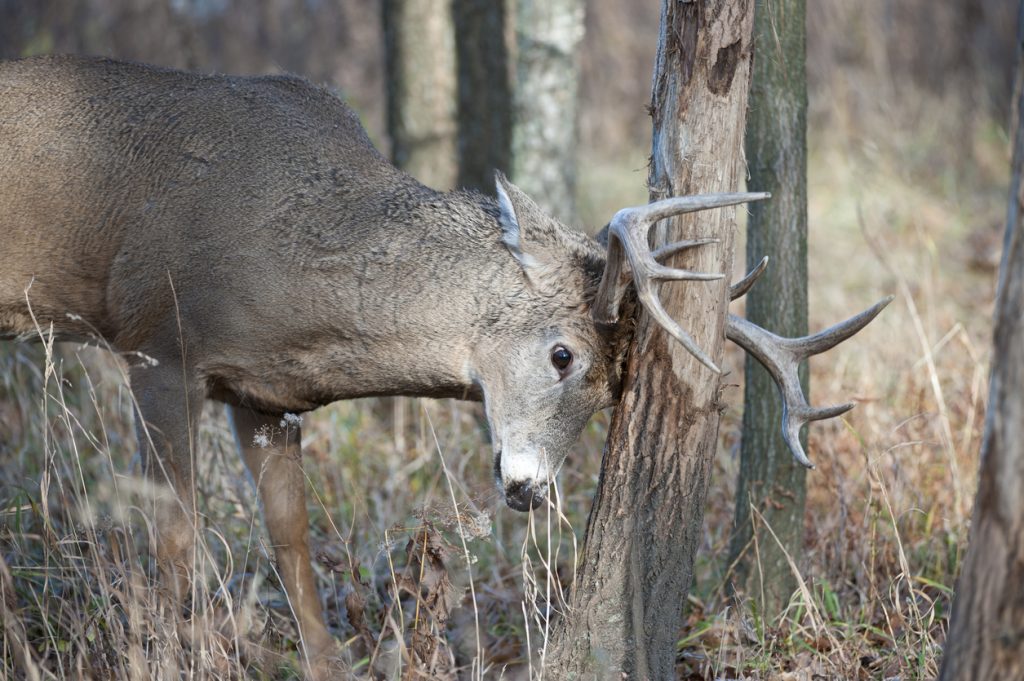Oak trees are a majestic feature of any landscape and play a vital role in local ecosystems. Growing up to 70 feet, oaks provide shade, valuable wildlife habitat, and beauty. Unfortunately, oaks are not immune to the threat of damage posed by insects and deer.
Early damage detection can protect oak trees and preserve their health. Even better, start with Forrest Keeling’s RPM-produced trees for a more resilient tree. Our RPM trees show superior survivability and lifetime vigor. A more robust tree gives you the best chance at success.
In this blog post, we’ll explore the common signs of insect and deer damage to oak trees.
Defoliation
One of the most recognizable signs of insect damage in oak trees is premature leaf loss or damage. Defoliation occurs when insects feed on their leaves. Caterpillars, like gypsy moths and oak leafrollers, are notorious for damaging oak trees.
Holes, Boring Marks, and Sawdust Piles at the Base
Bark beetles and wood borers can wreak havoc on an oak tree beneath the bark. These insects create holes or tunnels within the trunk or branches of oak trees. Look for small, round holes or sawdust-like frass. These are signs that point to insects burrowing into the tree.
Burrowing insects like carpenter ants and termites create sawdust piles around the tree. These piles may tip off the presence of wood-destroying insects.
Yellowing or Discolored Leaves
Insects like spider mites and aphids can sap the vitality of oak leaves. These insects suck sap from the leaves, weakening and distorting them. You may also notice leaves becoming yellow or discolored.
Oak-damaging insects can also disrupt the flow of water and nutrients within the tree. This leads to wilting or dieback of branches. Look for struggling areas, with leaves that wilt or appear smaller than normal.
Chewed or Torn Bark from Deer Rubs

Deer are opportunists when it comes to food but also have varied nutritional needs. Throughout the year, they’ll eat different types of plants and grasses. Pregnant and lactating does and antler-growing bucks need more protein in spring and summer. And all deer need a carbohydrate boost during winter. This drive for more food causes deer to browse, which can create significant damage to oak trees. by chewing or rubbing their antlers against the trunk. Browse behavior increases during the fall rutting season. Deer can strip away patches of bark, exposing the vulnerable inner wood. A tree that survives deer damage is more vulnerable to pests and disease.
Look for areas where the bark appears torn or damaged. In severe cases, deer can girdle the tree. Damage around the entire trunk disrupts the flow of nutrients that a tree relies on for survival. Look for signs of rubbing, such as bark wounds or hair caught in the bark.
Choose RPM Oak Trees from Forrest Keeling
Deer and insects can be a nuisance that disturbs the growth of healthy oak trees. Forrest Keeling’s RPM production grows stronger, more robust trees. Trees that grow 2X faster and offer better regeneration. Proven, superior performance even on your toughest remediation sites.
RPM trees combined with regular inspection and good management create long-term successful sites.
If you’re ready to begin a planting project, contact a Forrest Keeling representative. They can provide the information and recommendations you need.
Forrest Keeling… It’s where the best trees begin!
